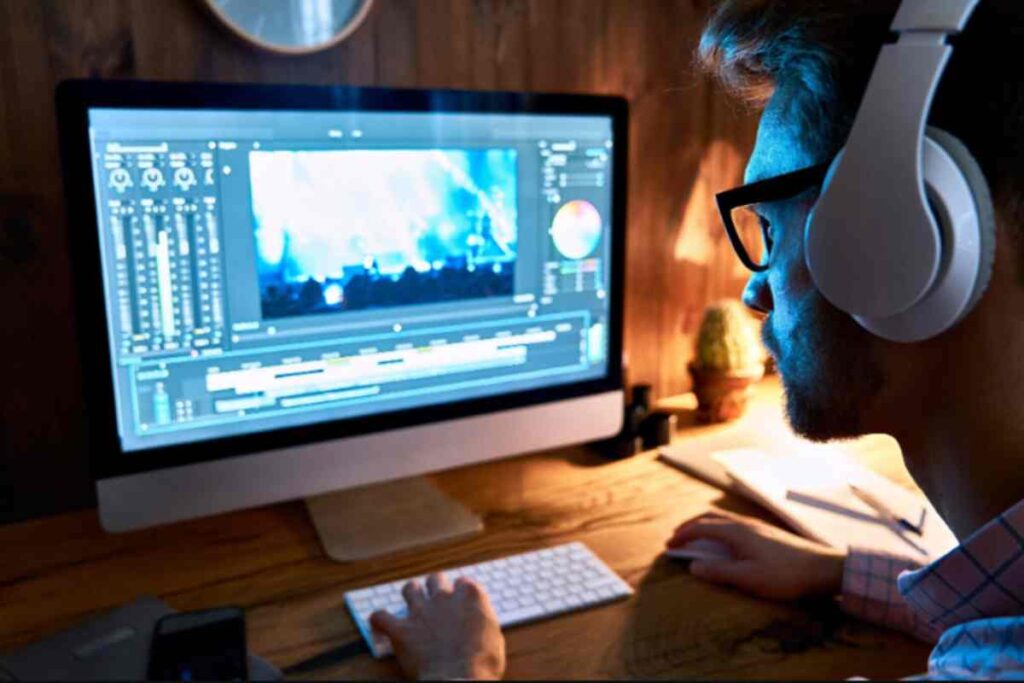Editing is where raw footage becomes a story. Every scene, every frame, takes on new meaning once you begin to shape it. Yet, one of the biggest challenges for editors-new or seasoned-is learning how to divide footage so the story feels natural, not forced. It’s not just about cutting; it’s about creating rhythm.
Every transition needs space to breathe. The secret lies in flow-the invisible thread that pulls viewers along without letting them notice the edit itself. Read more to discover how the right cuts can turn your raw clips into a seamless story.
Understanding the Flow of a Story
Every good edit starts with a clear sense of rhythm. Flow isn’t about speed-it’s about connection. Every shot should naturally transition into the next, enhancing the viewer’s understanding of the story. When you divide footage correctly, you guide the viewer through the story without confusion or distraction.
To find this rhythm, focus on emotion first. Ask yourself: what do I want the viewer to feel at this moment? Once you know that, your cuts will start to follow emotion, not just time. This emotional pacing becomes the heartbeat of your edit.
Finding the Perfect Cut Points
Cut points are where your story breathes. Too early, and it feels rushed; too late, and it drags. The key is to trust your instincts while keeping the story in mind. Watch your footage several times. Notice when your attention naturally fades-that’s usually where a cut belongs.
Pay attention to movement, facial expressions, or changes in sound; these cues often mark the ideal spots for transitions. The goal isn’t to remove parts-it’s to highlight the best ones. Cutting smartly makes your story stronger, not shorter.
The Art of Dividing Footage
Dividing footage is both a creative and technical skill. It’s about shaping moments into meaning. When you edit, you’re deciding what matters most. Long shots build tension, while short cuts keep energy high. Some clips may deserve space to breathe; others might work better when trimmed tightly.
Use your judgment to balance pace and clarity. Each division should help your story move forward naturally. With time, you’ll begin to feel where each piece belongs, like arranging notes in a song until the melody feels complete.
Tools That Simplify the Process
Editing can feel overwhelming when you have hours of footage. That’s why using reliable tools makes such a difference. With the right video splitter, you can break large clips into smaller, easier parts to work with.
This helps you focus on each section without losing sight of the whole. It also saves time, allowing you to refine transitions and experiment with pacing. Good tools don’t replace creativity-they support it, giving you the freedom to shape your story more clearly and confidently.
Building Emotion Through Pacing
Pacing controls how a story feels. Fast cuts bring energy and tension; slow moments bring warmth and depth. The balance between them decides how the audience connects with your work. A powerful scene can lose meaning if the rhythm feels wrong.
Try watching your edit with sound off, then with sound on. Notice how the timing changes. Music, dialogue, and silence all guide your pacing choices. When divided with purpose, footage can evoke emotion in subtle ways-turning a simple sequence into a lasting impression.
Creating Seamless Transitions
Transitions are where one moment flows into another. They can be smooth and invisible or sharp and deliberate. The key is to make sure every transition serves the story. Avoid cutting just for style; instead, cut for meaning.
If a scene change feels jarring, try adding a visual or sound bridge-a common color, sound, or motion that links the two shots. This small connection keeps the viewer engaged and makes your edit feel more natural. Remember, good transitions don’t call attention to themselves-they simply guide the eye forward.
Keeping Consistency Across the Edit
When editing long projects, consistency is what ties everything together. Lighting, color tone, sound levels, and pacing should all align. If one scene feels too bright or loud, it can break immersion. That’s why reviewing your footage after major edits is so important.
Look at your project as a whole, not just in parts. Adjust color grading and sound mixing to create a sense of unity. Consistency keeps your story believable-it makes the world inside your video feel complete and intentional.
Knowing When Less Is More
A common mistake in editing is holding on to too much footage. Every clip might feel important because you captured it-but not every shot needs to stay. The strongest edits often come from cutting with courage.
Ask yourself: does this moment add meaning, or is it just there because it looks good? If it doesn’t move the story forward, let it go. Clean, focused edits always make a bigger impact than cluttered ones. Simplicity gives your message space to breathe, and your viewers the chance to truly connect.
Reviewing with a Fresh Perspective
Once your first draft is done, step away from it. Take a short break and return with clear eyes. Watching your edit after some distance helps you spot issues you may have missed-awkward cuts, uneven pacing, or moments that feel off. You can also ask a friend or colleague to review it.
A new perspective often reveals details that blend into the background when you’ve watched something too often. Feedback is part of the creative process-it helps refine your instincts and strengthens your storytelling over time.
The Rhythm of a Complete Story
Editing isn’t about how much you cut-it’s about how well you connect. Dividing footage with care gives your story life, direction, and heart. When flow feels right, the viewer doesn’t see edits; they simply experience the story. A well-paced, well-structured edit turns simple footage into something memorable, something that moves and stays with people long after it ends.
Where Precision Meets Emotion
Every edit is a balance of heart and precision. The tools and techniques guide your hands, but emotion guides your choices. Each decision-each cut, each pause-builds toward something greater.
When you edit with purpose, you don’t just tell a story; you make it felt. Keep refining, keep learning, and keep trusting your instincts. The best edits aren’t the ones that show skill-they’re the ones that let the story speak for itself, clear, fluid, and alive.
For more on this content, visit the rest of our blog!


